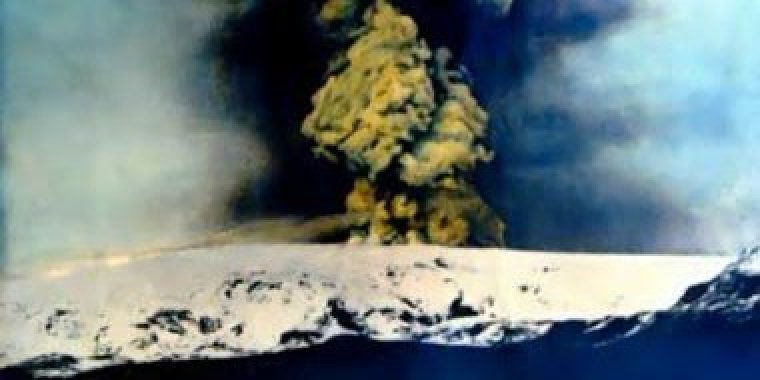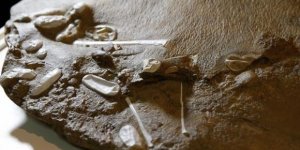| News / Science News |
Volcanic eruption influenced Iceland’s conversion to Christianity
A team of scientists and medieval historians, led by the University of Cambridge, has used information contained within ice cores and tree rings to accurately date a massive volcanic eruption, which took place soon after the island was first settled.

Katla volcano erupting through Mýrdalsjökull ice cap in 1918. ![]()
Having dated the eruption, the researchers found that Iceland’s most celebrated medieval poem, which describes the end of the pagan gods and the coming of a new, singular god, describes the eruption and uses memories of it to stimulate the Christianisation of Iceland.
The eruption of the Eldgjá in the tenth century is known as a lava flood: a rare type of prolonged volcanic eruption in which huge flows of lava engulf the landscape, accompanied by a haze of sulphurous gases.
Iceland specialises in this type of eruption – the last example occurred in 2015, and it affected air quality 1400 kilometres away in Ireland.
The Eldgjá lava flood affected southern Iceland within a century of the island’s settlement by Vikings and Celts around 874, but until now the date of the eruption has been uncertain, hindering investigation of its likely impacts.
The Cambridge-led team pinpointed the date of the eruption using ice core records from Greenland that preserve the volcanic fallout from Eldgjá. Using the clues contained within the ice cores, the researchers found that the eruption began around the spring of 939 and continued at least through the autumn of 940.
The effects of the Eldgjá eruption must have been devastating for the young colony on Iceland – very likely, land was abandoned and famine severe.
But Iceland’s most celebrated medieval poem, Vǫluspá (‘The prophecy of the seeress’) does appear to give an impression of what the eruption was like.
The poem, which can be dated as far back as 961, foretells the end of Iceland’s pagan gods and the coming of a new, singular god: in other words, the conversion of Iceland to Christianity, which was formalised around the turn of the eleventh century.
The poem’s interpretation as a prophecy of the end of the pagan gods and their replacement by the one, singular god, suggests that memories of this terrible volcanic eruption were purposefully provoked to stimulate the Christianisation of Iceland. (University of Cambridge)
YOU MAY ALSO LIKE





